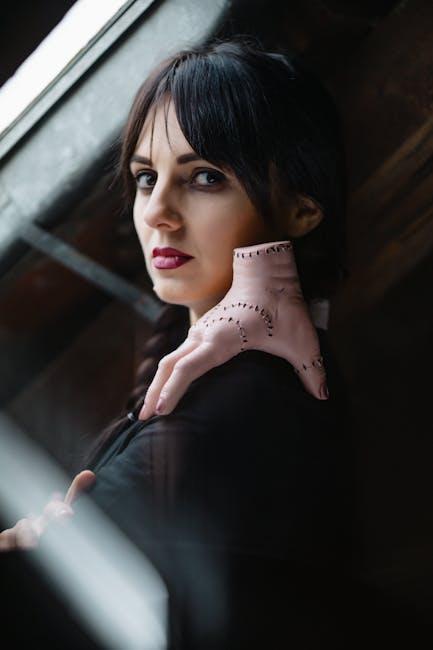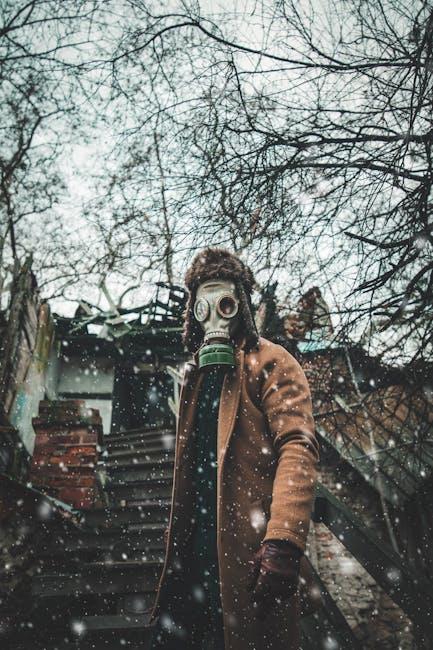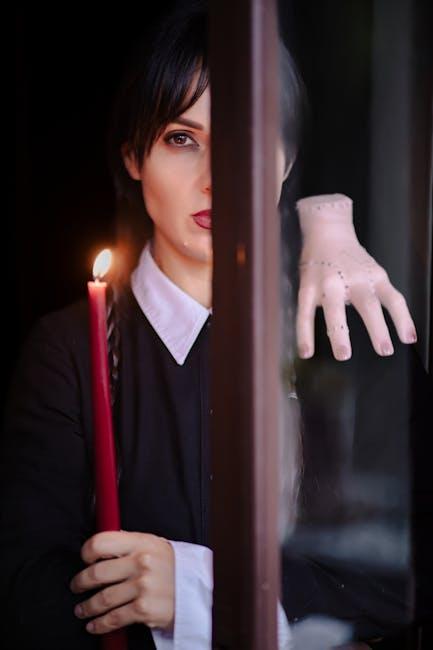In the dimly lit corridors of cinematic history, certain directors possess an uncanny ability to craft atmospheres that linger long after the credits roll. “Disclaimer,” a film that has captivated audiences with its unsettling allure, stands as a testament to the power of visionary direction. As we delve into the eerie world of “Disclaimer,” we embark on a journey to uncover the maestros behind its haunting ambiance. These directors, with their unique blend of artistry and intuition, have sculpted a narrative landscape where shadows dance and whispers echo. Join us as we explore the creative minds that have shaped “Disclaimer’s” chilling yet mesmerizing atmosphere, inviting viewers into a realm where mystery and intrigue reign supreme.
Crafting Shadows Behind the Lens
In the haunting corridors of “Disclaimer,” a chilling atmosphere lingers, crafted meticulously by visionary directors who excel in the art of suspense. Their mastery lies in their ability to manipulate light and shadow, creating a visual narrative that resonates with the audience long after the credits roll. These directors are not just storytellers; they are architects of mood, building tension with every frame.
- Subtle Lighting Techniques: By employing low-key lighting, they cast long, ominous shadows that creep across the screen, hinting at unseen dangers lurking in the dark.
- Unconventional Camera Angles: The use of skewed perspectives and tight close-ups amplifies the feeling of unease, making viewers feel like they’re peering into a world slightly off-kilter.
- Symbolic Use of Color: Muted tones and strategic splashes of color are used to evoke emotions, with each hue carefully chosen to reflect the psychological state of the characters.
These directors understand that the most terrifying monsters are often those we never fully see. By leaving much to the imagination, they allow the audience’s mind to wander into the shadows, filling in the blanks with their deepest fears. Their genius lies not just in what they show, but in what they choose to hide, creating an eerie atmosphere that is as unforgettable as it is unsettling.

Visionaries of Unease: Directors Artistic Choices
In crafting the unsettling atmosphere of “Disclaimer,” directors employed a tapestry of artistic choices that transformed the narrative into a haunting experience. These visionaries delved deep into the realms of unease, employing a meticulous blend of visual and auditory elements to evoke a lingering sense of dread. Their mastery lies in the subtlety of their craft, where every shadow and whisper contributes to the overarching tension.
- Color Palette: The directors chose a muted color palette, often using shades of grey and deep blues to create a somber, oppressive mood. This choice not only reflects the inner turmoil of the characters but also envelops the audience in a world where the boundaries between reality and imagination blur.
- Sound Design: Sound plays a pivotal role in amplifying the eerie atmosphere. The directors opted for minimalistic soundscapes, punctuated by sudden, jarring noises that catch viewers off guard. The strategic use of silence is equally powerful, allowing tension to build organically.
- Camera Techniques: Unconventional camera angles and lingering shots are employed to evoke discomfort. The directors often use close-ups to create an intimate, claustrophobic feel, while wide shots reveal the stark isolation of the characters, enhancing the sense of unease.
Through these deliberate artistic choices, the directors of ”Disclaimer” have not only shaped a visually arresting film but have also invited audiences to explore the unsettling depths of human emotion and perception. Their work stands as a testament to the power of cinema to disturb and captivate in equal measure.

Subtle Nuances: Building the Perfect Eerie Mood
Crafting an eerie atmosphere requires a delicate balance of elements, a symphony of subtlety that whispers rather than shouts. The directors behind “Disclaimer” have mastered this art, weaving a tapestry of unease that lingers long after the credits roll. They employ a range of techniques to evoke an unsettling mood, from the choice of lighting to the rhythm of the narrative.
- Lighting and Shadows: The interplay of light and shadow is crucial in creating an eerie ambiance. Directors often use dim, flickering lights or stark contrasts to evoke a sense of mystery and tension.
- Sound Design: An eerie atmosphere is as much about what you hear as what you see. Subtle, unsettling sounds—like distant whispers or creaking floors—add layers of tension and anticipation.
- Pacing: The rhythm of the story can significantly impact the mood. Directors often use deliberate pacing, allowing moments of silence to stretch and breathe, heightening the suspense.
Through these nuanced techniques, the directors of “Disclaimer” invite viewers into a world where the familiar becomes strange, and every shadow holds a secret. It’s a masterclass in the art of suggestion, where the unseen is often more terrifying than the visible.

From Script to Screen: Recommendations for Aspiring Directors
For aspiring directors looking to translate the written word into a visual masterpiece, understanding the nuances of atmosphere is key. In the eerie world of “Disclaimer,” directors have woven a tapestry of tension and intrigue that grips the audience from the first frame to the last. Here are some recommendations to help you create a similarly captivating atmosphere:
- Visual Consistency: Establish a color palette that reflects the mood of your story. Use muted tones or stark contrasts to evoke feelings of unease and mystery.
- Sound Design: Silence can be as powerful as sound. Incorporate ambient noises, subtle music, or the absence of sound to heighten suspense.
- Lighting Techniques: Play with shadows and light to create a sense of uncertainty. The interplay of darkness and illumination can add layers of depth to your scenes.
By focusing on these elements, directors can transform a script into a visceral experience that lingers in the minds of viewers. The mastery of atmosphere is not just about what is seen, but what is felt, inviting the audience to step into a world that is both haunting and mesmerizing.


